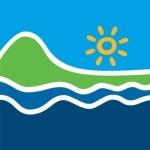Hands-on city building launches SmartGrowth resource
Bay of Plenty community leaders got down on the floor this morning to build their dream city using blocks and a giant floor map.
They were getting a hands-on look at a new teaching resource launched for high school students that looks at managing growth in the western Bay of Plenty.
'Managing Growth - SmartGrowth' has been jointly developed by the western Bay of Plenty's growth planning organisation SmartGrowth, Tauranga City Council and Bay of Plenty Regional Council with educational curriculum development company Indigo Pacific.
The free resource uses SmartGrowth and the western Bay of Plenty sub-region as a case study for managing growth, exploring global growth-related concepts and national growth-related trends.
Launching the resource, SmartGrowth independent Chairman Bill Wasley said the resource is free for all education providers to use to develop the knowledge of future generations about issues of population growth and how communities can manage these issues over a long period of time.
"It investigates the nature of population growth, in particular in the western Bay of Plenty sub-region, urban settlements and patterns, planning and decision-making, and population growth and sustainability-related issues relevant to our region," he said.
"The resource gives students an opportunity to learn more about the real-world implications for planning for a rapidly growing community to live, work and play. It teaches critical thinking and decision-making, based on the western Bay of Plenty."
Otumoetai College teacher Nick Page helped test the resource with students.
"I think the kids appreciate the variety of learning activities that cater for different learning styles. There's visual, group work and discussion in a real and meaningful context. The in-depth nature of the learning is the envy of other schools in other regions," he said.
The resource also studies mapping and spatial analysis, the potential role of youth and young people in planning and decision-making. It uses a variety of learning activities, including PowerPoint slide shows, a giant floor game, role play cards, worksheets and information sheets to stimulate learning.
The kit is divided into six topic areas -- population growth, urban patterns and settlements, mapping and spatial analysis, planning and decision-making, current issues and getting involved.
It looks at population growth, distribution and density, growth drivers, ecological sustainability and foot-printing, as well as urban patterns, change and design, the history of urban settlements and future intensification.
Students can study mapping and spatial analysis using aerial photos, a précis map, spatially comparing shopping areas and GIS data. It also looks at the Resource Management Act, decision making, zoning, Māori geographic terms and the resource consent process using current issues such as Tauranga's Southern Pipeline.
Several Bay of Plenty schools have been involved in testing the resource before the launch, including Tauranga Girls College, Ōtumoetai College, Rotorua Girls High School, Trident High School in Whakatāne and Hamilton Boys High School.
The teaching resource is available on Bay of Plenty Regional Council's website, www.boprc.govt.nz/smartgrowth and will be used in schools this year.
